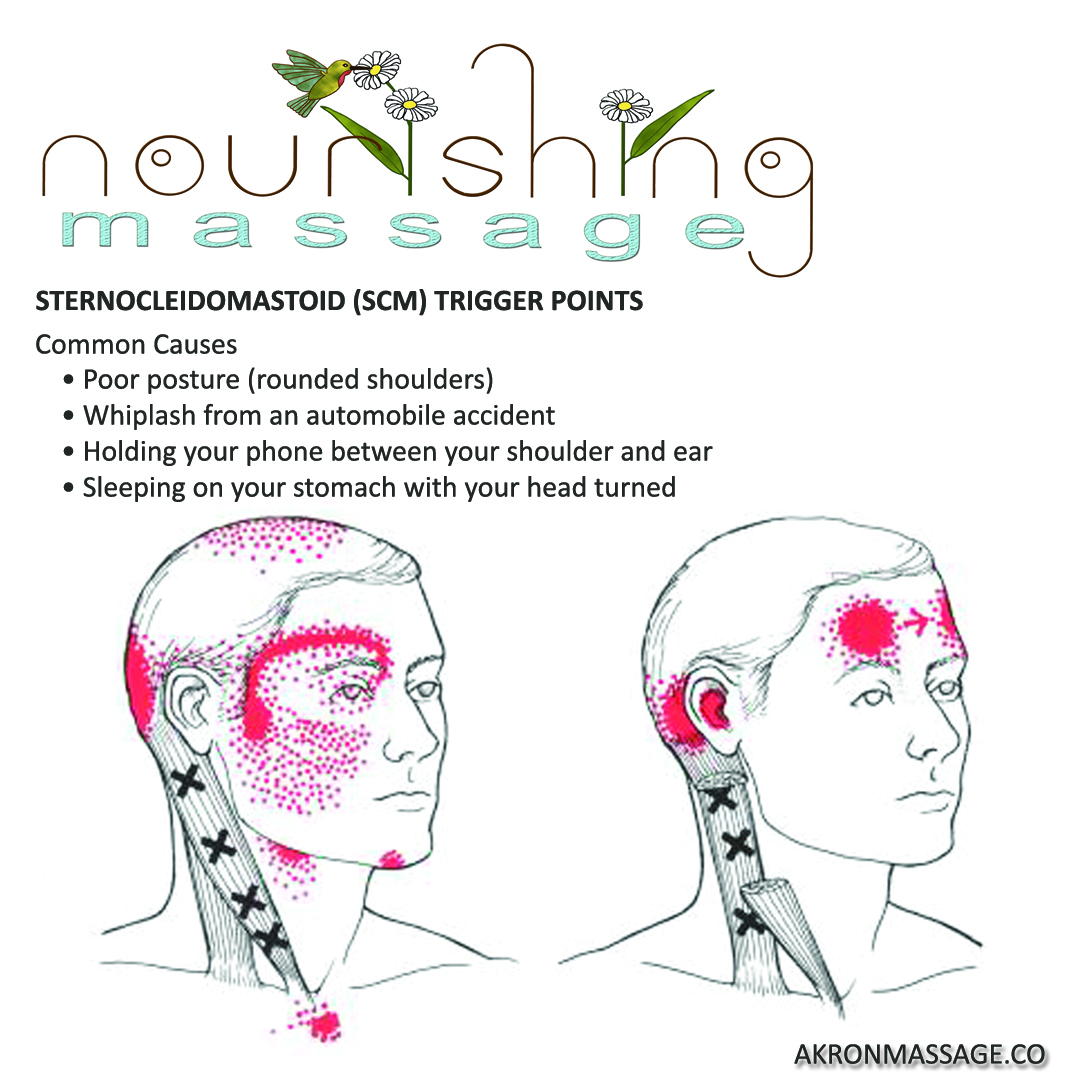Sternocleidomastoid Trigger Point Release and Stretch
The Sternocleidomastoid (SCM), a prominent superficial muscle situated in the anterior part of the neck, boasts dual points of origin, arising from the top of the manubrium and the medial one-third of the clavicle. This muscle elegantly inserts onto the mastoid process of the temporal bone, orchestrating a range of pivotal movements for the cervical spine.
Functionally versatile, the Sternocleidomastoid engages in flexion (bringing the chin to the sternum), lateral flexion (tilting the ear to the shoulder), and extension of the cervical spine. Notably, it contributes to contralateral cervical rotation, allowing one to look over their shoulder. Beyond these roles, the SCM serves as an accessory muscle during forced inhalation, showcasing its involvement in essential respiratory processes.
An intriguing aspect of the Sternocleidomastoid is its vulnerability to injury, often occurring in rear-ended automobile accidents due to the abrupt whiplash motion. Consider the dynamics of your daily activities – do you spend extended periods seated with rounded shoulders and your head inclined over your sternum? Are you frequently peering down at the screens of your laptop, cell phone, or tablet? These daily habits can significantly impact the well-being of your Sternocleidomastoid and, consequently, your overall musculoskeletal health.
Understanding the intricacies of how muscles and the body function empowers you to take proactive measures in their care. As you delve into the biomechanics of the Sternocleidomastoid, you gain valuable insights into its role in maintaining a healthy and functional neck.
Let’s explore the anatomy further. The Sternocleidomastoid originates from the top of the manubrium and the middle one-third of the clavicle, forming a muscular connection to the mastoid process of the temporal bone. Its actions encompass not only the fundamental flexion, lateral flexion, and extension of the cervical spine but also the nuanced contralateral cervical rotation. Additionally, its participation as an accessory muscle in forced inhalation underscores its integral role in respiratory mechanics.
Practical knowledge extends beyond theory, and palpating your Sternocleidomastoid enhances your understanding. To locate it, simply rotate your head to one side and flex it; you’ll notice the muscle visibly protruding. Run your thumb and index finger along the muscle, noting that it’s easier to grasp from the middle to the lower portion. As you ascend, you’ll feel the challenge in grasping, indicative of the convergence of the two heads.
Delving into trigger points further enriches our comprehension. The Sternocleidomastoid houses seven active trigger points, with four within the sternal head and three within the clavicular head. Trigger points in the sternal division radiate pain to the cheek, supraorbital ridge, sternum, back of the head, and top of the head. Conversely, trigger points in the clavicular division refer pain to the forehead and ear.
The Sternocleidomastoid is not merely a muscle but a dynamic entity integral to daily activities and often overlooked until discomfort arises. Nurturing an awareness of its anatomy, functions, and potential trigger points empowers you to foster a healthier, more resilient neck and, consequently, a more robust musculoskeletal system.
QUICK REFERENCE
Origin- Top of the manubrium and middle one-third of the clavicle.
Insertion- Mastoid process of the temporal bone. Action- Flexion, lateral flexion, and extension of the cervical spine, It also performs contralateral cervical rotation. It is also an accessory muscle for forced inhalation.
Palpation- Locate your Sternoclideomastoid (SCM) by rotating your head to one side and flexing it. You will see a muscle pop out. That is your SCM. Grasp the muscle between your thumb and index finger. You will find it easier to grasp from the middle portion of the muscle to the lower portion of the muscle. The higher you go up on the muscle the harder you will find it is to grasp as the two heads join together.
Trigger Points- There are 7 actively located trigger points within the sternocleidomastoid. There are 4 within the sternal head and 3 within the clavicular head. Trigger points within the sternal division of this muscle can cause radiating pain to the cheek and along the supraorbital ridge (brow bone area), sternum, back of the head, and top of the head. Trigger points within the costal division refers pain to the forehead and ear.
SCHEDULE ONLINE HERE

